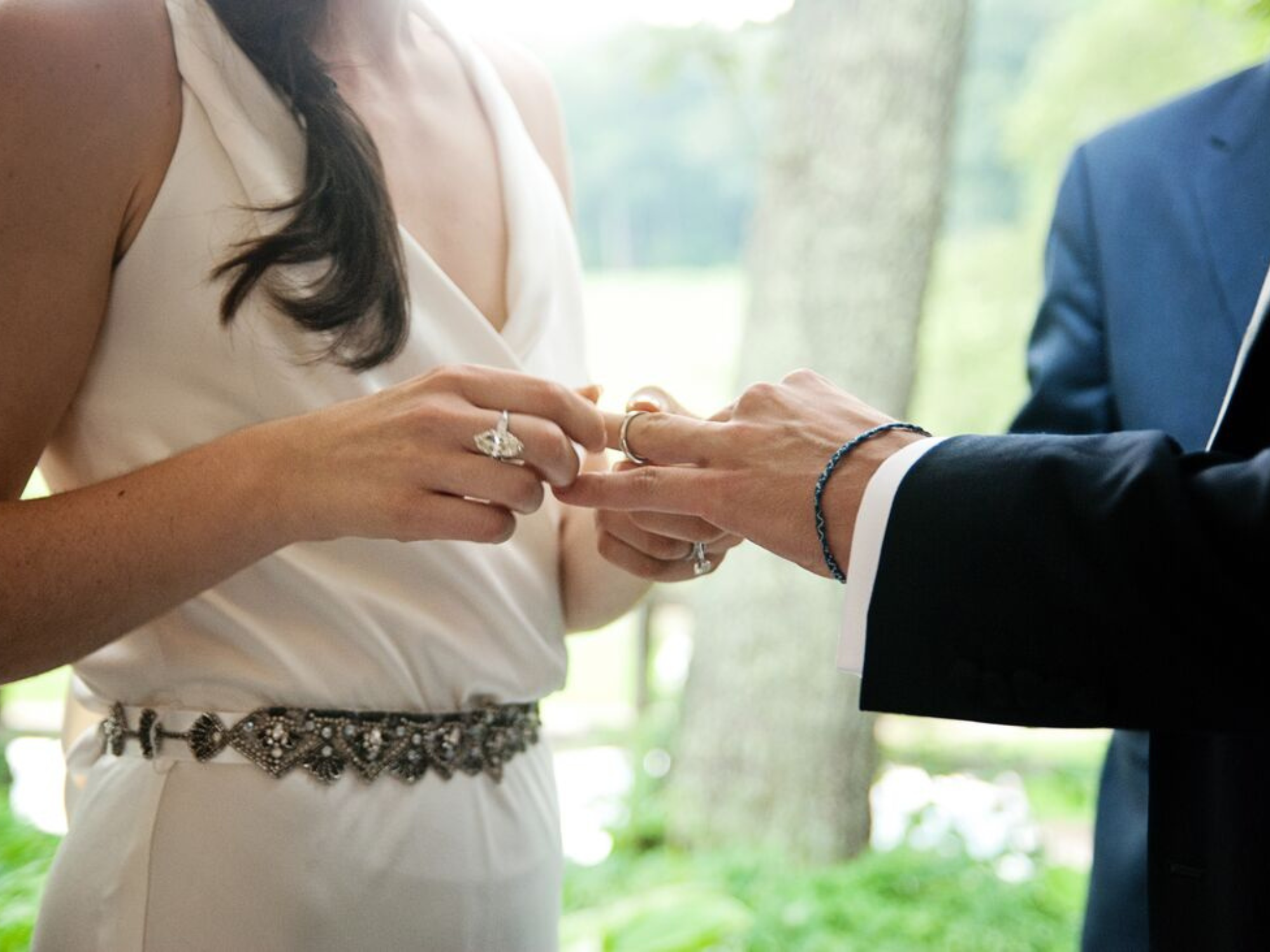Why We Should Consider Moving on From Carrying the Bride Over the Threshold

The image of a groom carrying the bride over the threshold into their new home after the wedding day has long been a tradition we've seen iterated on television, movies and in real life. The act is a joyous occasion, celebrating your new marriage and heading into your home to begin your new life together. While the tradition itself is done in good fun, there are some curious parts of this act's history that might not have as light of intentions. Want to learn more about carrying the bride over the threshold? Read ahead to learn about the origins and meaning behind the post-nuptial ritual.
In this article:
- Carrying the Bride Over the Threshold Origin
- Why Does the Groom Carry the Bride Over the Threshold?
- When Does the Groom Carry the Bride Over the Threshold?
- What Does Carrying the Bride Over the Threshold Symbolize?
- Is It Good Luck to Carry the Bride Over the Threshold?
- Why We Should Consider Ditching the Tradition
- Alternatives to the Tradition
Carrying the Bride Over the Threshold Origin
There are two main origins of the wedding tradition of carrying the bride over the threshold: One is from Ancient Rome, where soldiers abducted women against their will, and another from Medieval England, in which grooms would carry the bride into the door entry to avoid evil spirits cursing the marriage. The first tradition is from the Rape of the Sabine Women in Roman mythology. It became a common practice in Roman culture for a bride to attempt to run to her mother's home as the groom and his friends would chase her. Then, the groom would carry her back over his home's threshold. This tradition was to indicate the bride wasn't too eager to consummate the marriage.
The second tradition from England says there may be evil spirits that remain at the threshold of the door that could ruin the bride's fertility and marriage. If the groom carries her above the threshold, he can create a protective boundary for the new bride.
Why Does the Groom Carry the Bride Over the Threshold?
The groom carries the bride over the threshold to bring her into their new home together according to tradition and mark the beginning of their married household together. In earlier times, this tradition was to mark that the bride was demure and not eager to begin life as a wife.



When Does the Groom Carry the Bride Over the Threshold?
The groom carries the bride over the threshold when they first arrive at their home together after the wedding celebrations. This can occur after the reception or upon return from the honeymoon.
What Does Carrying the Bride Over the Threshold Symbolize?
Carrying the bride over the threshold symbolizes that the bride and groom are about to begin the next part of their lives in marriage together. It also symbolizes that they are entering a home that they will now share as husband and wife.
Is It Good Luck to Carry the Bride Over the Threshold?
While some say choosing the right wedding date or time in the moon cycle lends luck to your nuptials, the tradition of carrying the bride over the threshold is said to instill good luck as well. Those who follow the belief stemming from Medieval England think this act wards off evil spirits.
Why We Should Consider Ditching the Tradition
Since the tradition of carrying the bride over the threshold has roots in misogyny, kidnapping and rape, it makes sense why many call to retire this wedding custom. The roots allude to the bride not willingly entering the marriage, rather than the couple entering the next phase of their lives as equals. Couples who don't wish to align themselves with this uncomfortable and violent history may want to reconsider practicing this when they enter their home after the wedding.
Alternatives to the Tradition
If you want to do away with this tradition or put your own spin on it, there are some fun alternatives to try. Reverse and put a feminist spin on the tradition by having the bride carry the groom into the home if possible. For LGBTQ+ couples, practicing this heteronormative tradition can be a fun, inclusive spin in itself. Or, you could both hold hands and jump in together to avoid those "bad spirits."




















